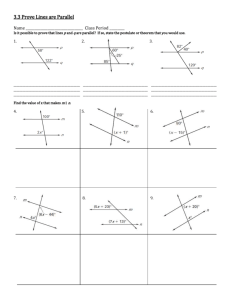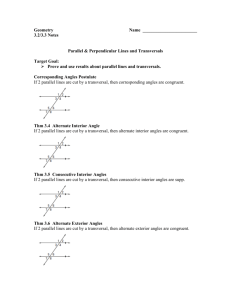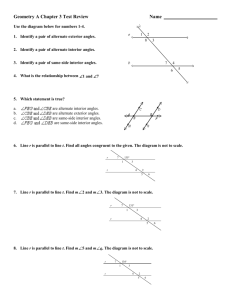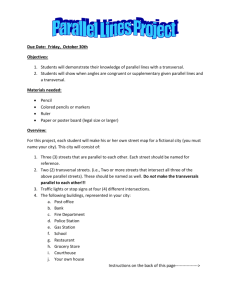two summative assessments parallel lines
advertisement
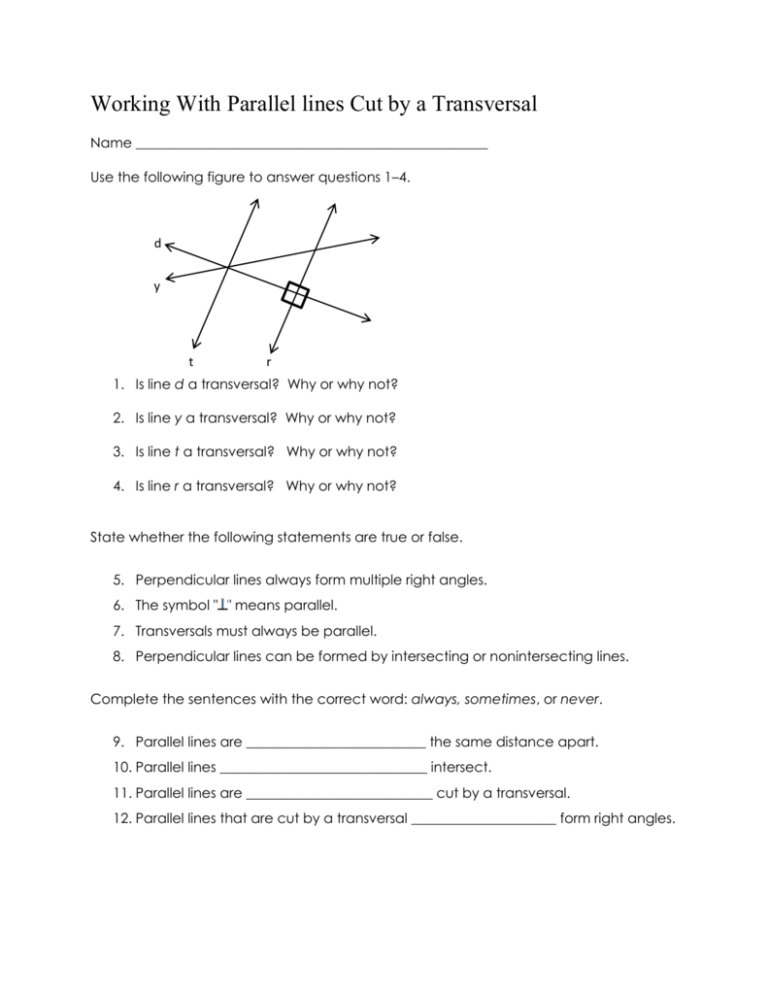
Working With Parallel lines Cut by a Transversal Name ___________________________________________________ Use the following figure to answer questions 1–4. d y t r 1. Is line d a transversal? Why or why not? 2. Is line y a transversal? Why or why not? 3. Is line t a transversal? Why or why not? 4. Is line r a transversal? Why or why not? State whether the following statements are true or false. 5. Perpendicular lines always form multiple right angles. 6. The symbol " " means parallel. 7. Transversals must always be parallel. 8. Perpendicular lines can be formed by intersecting or nonintersecting lines. Complete the sentences with the correct word: always, sometimes, or never. 9. Parallel lines are __________________________ the same distance apart. 10. Parallel lines ______________________________ intersect. 11. Parallel lines are ___________________________ cut by a transversal. 12. Parallel lines that are cut by a transversal _____________________ form right angles. Name ________________________________________________________________________ In the following figure, m ll n and s ll t. For questions 1-6, (a) state the special name for each pair of angles then (b) tell if the angles are congruent or supplementary. 1. 2 and 10 a. _________________________________________________ b. ___________ 2. 6 and 7 a. _________________________________________________ b. ___________ 3. 13 and 15 a. _________________________________________________ b. ___________ 4. 11 and 14 a. _________________________________________________ b. ___________ 5. List all angles that are equal to 1. 6. List all angles that are supplementary to 11. For questions 7–10, use the measure of the given angle to find the missing angle. State the special name for the angles. Use the diagram above 7. m 2 = 100°, so m 7 = ________ _____________________________________________ 8. m 8 = 71°, so m 12 = ________ _____________________________________________ 9. m 5 = 110°, so m 7 = ________ _____________________________________________ 10. m 2 = 125°, so m 11 = ________ _____________________________________________ Complete the statement for practice problems 11-16. 11. Alternate interior angles are similar to corresponding angles because _______________________________________________________. 12. Alternate interior angles differ from corresponding angles because _______________________________________________________. 13. Same-side interior angles are similar to alternate interior angles because _______________________________________________________. 14. Same-side interior angles differ from alternate interior angles because _______________________________________________________. 15. Same-side interior angles are similar to corresponding angles because _______________________________________________________. 16. Same-side interior angles differ from corresponding angles because _______________________________________________________.


